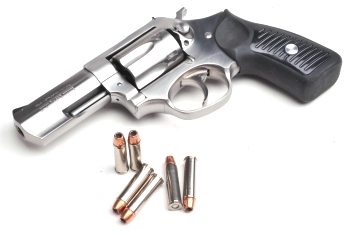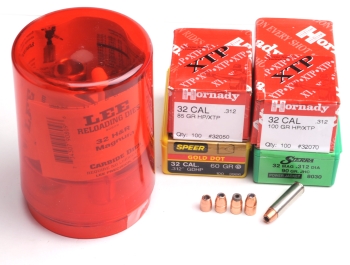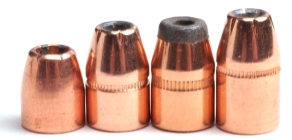|
|
|||||||||||||||||||||||||||||||||||||||||||||||||||||||||||||||||||||||||||||||||||||||||||||||||||||||||||||||||||||||||||||||||||||||||||||||||||||||||||||||||||||||||||||||||||||||||||||||||||||

It’s hard to write about firearms. I’m thinking, “If I can get the right blend of Bob Dylan and Waylon Jennings, a little “When I Paint My Masterpiece” meets “Armed And Dangerous”, the words will read as intended. Unfortunately, the words often come out sounding more like Yosemite Sam. Firearm verbiage has been flogged into narrow industry vocabulary, politically and culturally conditioned to keep us out of trouble with readers, critics, clients and antigun whiners. My edge is being 63. I may have to apologize for a lack of talent, but not for a lack of honesty. The Ruger SP101 in perspective… These days the little SP101 is in short supply, but it is one of those guns that’s worth the wait. Once upon a time I had two Ruger SP101 327 Federal Magnum revolvers. After we published Part I, we were inundated with phone calls and email with offers from people wishing to purchase the revolver. One was put one up for auction and sold for $1,100+ dollars. Not bad for a gun with an MSRP of $589. It was listed amidst Taurus and Charter Arms guns, chambered for the same cartridge, none of which were listed above $400, and all auctions closed without bids. I missed the Ruger as soon as it was sold and would have bought it back if that were an option. The .327 Federal Magnum isn’t a last resort cartridge, unless you think the .357 SIG is a last resort cartridge. The .327 Federal is flat shooting and hard hitting, but without the downsides of heavy recoil and exceptionally loud muzzle blast. It’s got good bark and good bite and the gun’s built to last. The SP101 shot a good deal over a period of several weeks with both factory ammo and stiff handloads. Cylinder gap and headspace remained as received, no part of then gun shot loose. When some decent leather is located, cross draw perhaps, the Ruger will be my carry gun, shop gun and house gun.
Published factory ballistics for the .327 Federal Magnum are based on a 4″ vented barrel, not the 3 1/16″ barrel length of the Ruger and certainly not the even shorter barrel of some of the competing products. How much is the difference in barrel length between the development barrel and the Ruger? Apparently, not much. Over the chronograph, factory low recoil 85 grain loads matched Federal published velocity as did the 100 grain; 1,400 and 1,500 fps respectively. The factory ammo burned clean, produced moderate muzzle flash and sub 3/4″, seven yard groups. Vented barrel, ported barrel, vented expansion chamber barrel don’t seem to get much out of that last inch of barrel. An interesting combination to handload… Case capacity for the H&R is approximately 16 grains, 19 grains for the Federal case. Here’s one time when making a federal case out of something is actually beneficial. Sometimes I just crack myself up.
Cases are sized to 0.329″ from the mouth to 0.125″ above the rim – the difference in case length. A fired case is expanded to roughly 0.339″ in diameter from the mouth to just above the case web, 0.125″ above the rim. The last 0.125″ remains at 0.336″ when a round is fired and doesn’t need to be resized. When I was working through this issue, I called Lee Precision tech and was advised with confidence the H&R dies could indeed be used for the .327 Federal Magnum, but when I asked if the die had to be setup any differently, I was told I would have to figure that out for myself. Not typical Lee Precision, but it happens at most companies from time to time and it gave me a good laugh for the day. I did take their advice and in five minutes figured it out for myself. Whose a good boy? The sizer is set up just as it would be for the .32 H&R; run it down to a raised shell holder.
Generally speaking, handloading was uneventful. All but the Enforcer load for the 60 grain Gold Dot were flake powder and compressed loads. Enforcer is spherical powder and quite dense, so no compression required. Hornady bullet cartridge COL was uniform, established by the cannelure position with the 100 grain protruding deeper into the case. Every cartridge received a tight roll crimp from the seater die and this did make a big difference in velocity with some of the slower burning powders. There was one casualty in the bunch. I was reloading nickel plated brass, trying to flare the case mouth as little as possible, got careless in seating, and Captain Crunched the case. I was doing an empty shop imitation of Tom Waite singing Joe Cocker’s Delta Lady at the time and must have lost my concentration. Anyway… Handloads and I can still type with both hands…
Powder selection was critical and some of the projections based on powder type that would normally hold true did not in this application. I ran some loads from Hodgdon data to see if I could anchor something, but I could not get within almost 200 fps of these published results. I do not know what barrel length was the basis for the velocity noted with their data. While velocity varied a good deal within a given bullet weight, pressure indicators were uniformly near the high end. A couple of tenths increase in some of the lower velocity loads would result in hard to eject cases. Primers weren’t exactly flat, but on their way. Accuracy was good. The heavier 90 and 100 grain loads, Enforcer and 2400 could clover leaf at seven yards if I took my time. 60 grain was fun to play with, but I couldn’t see a useful load based on this bullet weight. There are a few newer powders I would like to try, so I won’t call this done yet. As when I began, great gun, great cartridge. Ruger’s SP101 327 Federal Magnum Part I |
|||||||||||||||||||||||||||||||||||||||||||||||||||||||||||||||||||||||||||||||||||||||||||||||||||||||||||||||||||||||||||||||||||||||||||||||||||||||||||||||||||||||||||||||||||||||||||||||||||||
Comments appearing below are posted by individuals in a free exchange, not associated with Real Guns. Therefore RGI Media takes no responsibility for information appearing in the comments section. Reader judgement is essential.




Email Notification